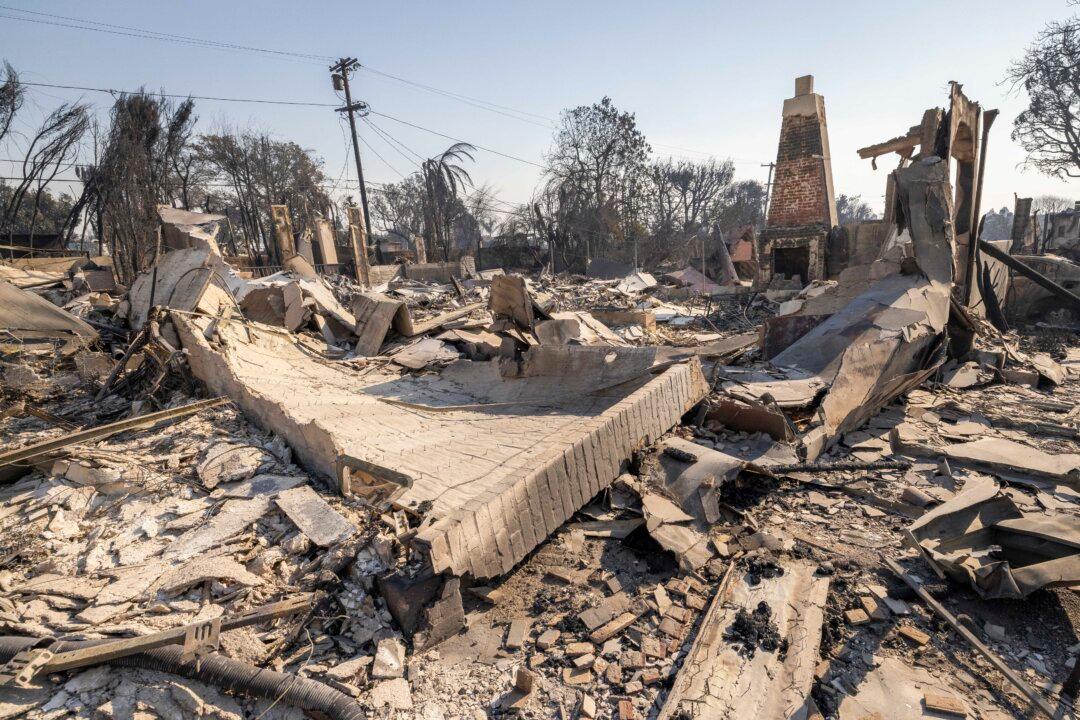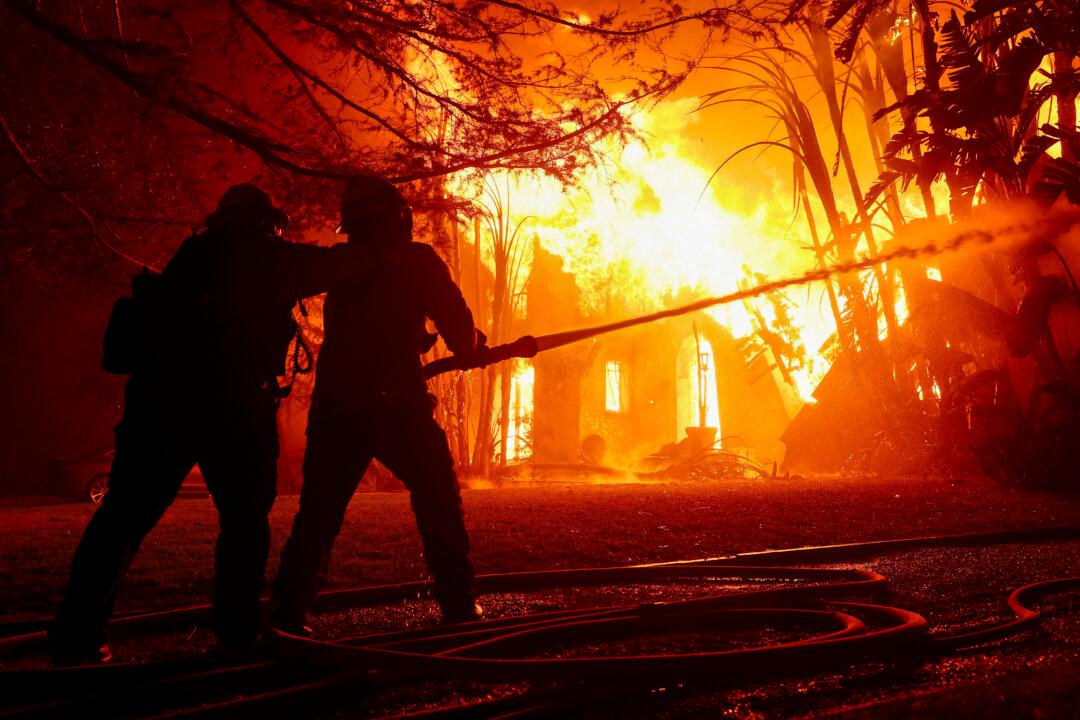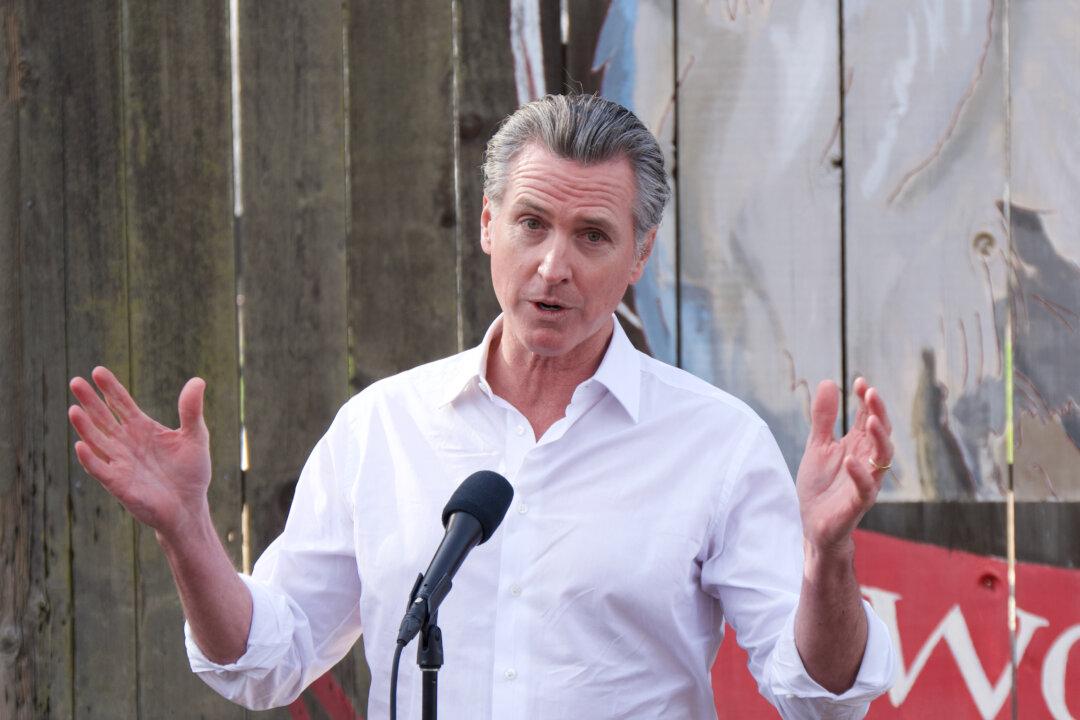As Californians already face significant challenges finding home insurance, the fires ravaging Los Angeles County could make it even more difficult and costly to insure properties in the future.
Deadly fires erupted beginning on Jan. 7, causing at least 11 deaths, leading to the ongoing ordered evacuation at one point of more than 180,000 individuals, with another 200,000 warned to get ready for possible evacuation.
As of the latest tally on Jan. 9, the Pacific Palisades fire destroyed nearly 6,000 structures, including oceanfront mansions in neighborhoods north of Santa Monica, where homes sell for between $7 million and $20 million, with an average price of more than $3 million across the city.
Video footage of the aftermath shows businesses and homes leveled by fire, with the blocks of some neighborhoods completely demolished by the inferno.
“State Farm General takes seriously our responsibility to maintain adequate claims-paying capacity for our customers and to comply with applicable financial solvency laws. It is necessary to take these actions now.”
Approximately 6,000 structures were lost in the Eaton Fire, as of the most recent count on Jan. 10. The East Altadena and Hasting Heights neighborhoods sustained significant damage.
The average value of homes in the area is approximately $1.4 million, according to the online real estate listing firm Zillow.
Insurance Market Stability in Question
With losses mounting, California’s already precarious insurance market could become more challenging if insurers become more hesitant to write policies.The state is going through what lawmakers and other elected officials have deemed a “genuine crisis” that is affecting millions of Californians.

Supervisors in counties from across the state passed resolutions last year calling for a state of emergency because of a lack of affordable insurance.
A lack of availability has left many Californians with only one option, the so-called FAIR plan—an insurer of last resort financially backed by insurance companies.
In the event the plan goes insolvent, insurers are on the hook to cover the losses, with each company paying out based on market share—thus incentivizing limiting liability by reducing exposure, according to analysts.

The number of homes insured with the FAIR plan skyrocketed in recent years—now totaling more than 450,000 policies—overwhelming staff assigned with managing calls, representatives with the Department of Insurance testified to the state Senate Insurance Committee last year.
Those stuck with the plans say they’re anything but fair, with some households paying as much as 500 percent more for less coverage.
Coverage was limited to $3 million per structure for residential homes, which could pose a problem for some homeowners in coastal areas affected by fire where values far exceed the cap.
Regulatory Hurdles
Insurance companies have shied away from doing business in the Golden State because of strict regulations that limit rate hikes and stall application processes, Rex Frazier, president of the Personal Insurance Federation of California, told The Epoch Times.He called for an expedited approval process and said the higher construction, labor, and reinsurance costs dictate the need for more expensive premiums.
Some of the largest insurers recently requested price hikes of 30 percent or more, and the Insurance Department is processing the applications.
“The problem is that the solution to the problem is going to be higher premiums, and people aren’t going to like that,” state Sen. Roger Niello, vice chair of the Senate Insurance Committee, told The Epoch Times.
The industry points to a challenging regulatory environment exacerbated by fire risk and inflation as reasons companies are reducing coverage in California.

Other points of contention for insurers are strict rules set in place by Proposition 103—known as the Insurance Rate Reduction and Reform Act—narrowly approved by voters in 1988 to oversee the industry after automobile insurance prices spiked.
Looking for Solutions
Insurance Department officials have agreed that some of the regulations are inhibiting progress.He released new guidelines last year that will allow insurers to use models that will allow for higher pricing, and the cap on FAIR plan coverage is raised to $20 million per structure.
To help reduce the number of homeowners relying on the FAIR plan, the new rules require insurers to increase the number of policies written in high-risk areas by at least 5 percent.
One policy analyst said removing government oversight and allowing a free market to determine pricing could be a more effective solution.
“And there would be an added bonus: by eliminating the Department of Insurance, the state could reduce its 3 percent tax on insurance premiums, part of which funds the department, providing an immediate savings for consumers.”







